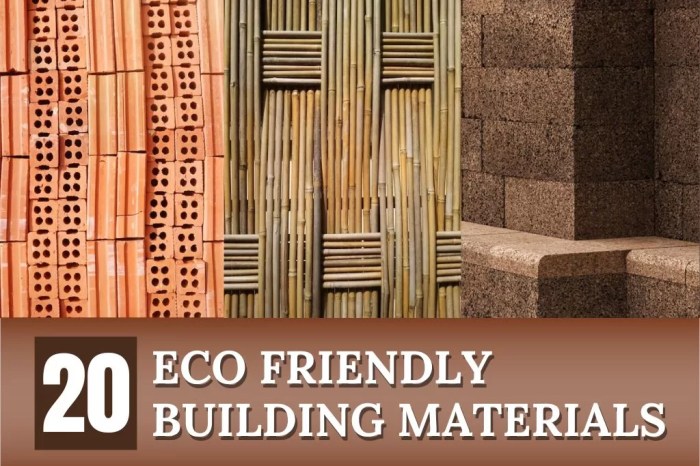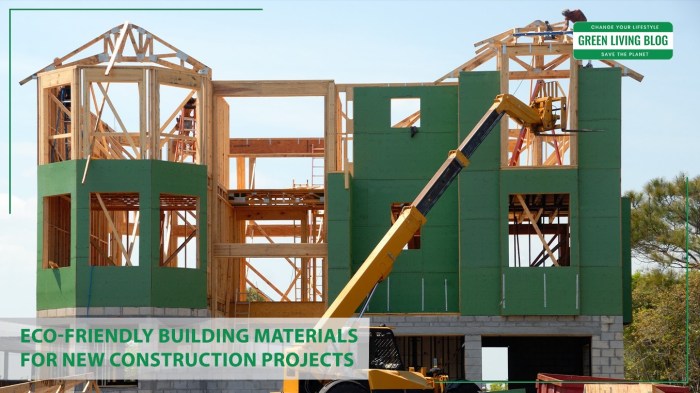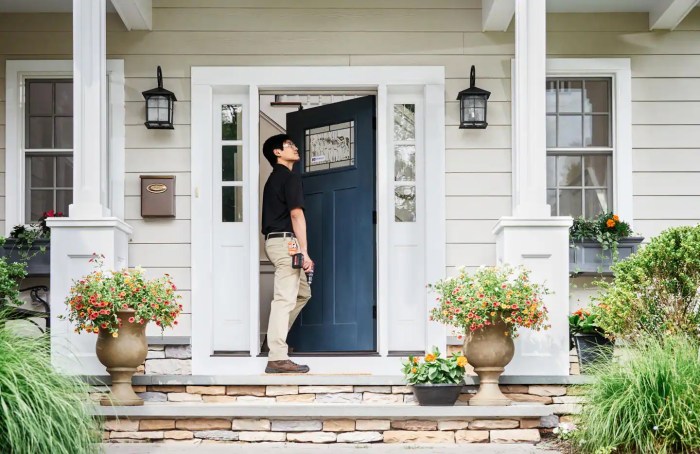Eco-Friendly Materials for Exterior Contractor Projects: A Sustainable Approach to Construction
Embark on a journey exploring the use of eco-friendly materials in exterior contractor projects, where sustainability meets innovation to shape a greener future for construction.
Discover the versatile range of eco-friendly materials and their impact on enhancing sustainability in the construction industry.
Types of Eco-Friendly Materials
When it comes to exterior contractor projects, using eco-friendly materials is essential for promoting sustainability and reducing environmental impact. Let's explore some of the top eco-friendly materials that are suitable for such projects.
1. Recycled Steel
Recycled steel is a durable and versatile material that can be used for various exterior applications, such as roofing, siding, and structural components. It is made from scrap steel, which helps reduce the demand for virgin steel production and minimizes waste.
Recycled steel is also highly recyclable, making it a sustainable choice for construction projects.
2. Bamboo
Bamboo is a rapidly renewable material that is known for its strength, durability, and aesthetic appeal. It can be used for exterior cladding, decking, and fencing, providing a natural and sustainable alternative to traditional wood products. Bamboo grows quickly and requires minimal maintenance, making it an eco-friendly choice for contractors.
3. Recycled Glass
Recycled glass is another eco-friendly material that can be used in exterior projects, such as countertops, tiles, and landscaping features. It is made from post-consumer glass bottles and jars, reducing the amount of glass waste in landfills. Recycled glass has a unique aesthetic and can add a touch of elegance to outdoor spaces while promoting sustainability.
4. Reclaimed Wood
Reclaimed wood is salvaged from old buildings, barns, and other structures, giving it a rustic and weathered appearance that adds character to exterior projects. Using reclaimed wood helps preserve forests and reduces the need for new lumber production. It can be used for siding, decking, and outdoor furniture, making it a popular choice among eco-conscious contractors.
5. Recycled Plastic Lumber
Recycled plastic lumber is a durable and low-maintenance material that can be used for outdoor decking, fencing, and furniture. It is made from recycled plastic bags, bottles, and other waste materials, diverting them from landfills and oceans. Recycled plastic lumber is resistant to rot, mold, and insects, making it a long-lasting and sustainable option for exterior construction.
Benefits of Using Eco-Friendly Materials

Using eco-friendly materials for exterior contractor projects comes with a multitude of benefits that go beyond just being environmentally conscious. Let's explore some of the advantages of incorporating these materials into construction projects.Eco-friendly materials are known for their ability to improve energy efficiency in buildings.
By using materials such as recycled steel, bamboo, or reclaimed wood, construction projects can reduce energy consumption and lower utility costs in the long run. These materials often provide better insulation, which helps maintain a comfortable indoor temperature without excessive reliance on heating or cooling systems.
Cost Savings Associated with Eco-Friendly Materials
- One of the significant benefits of using eco-friendly materials is the potential for cost savings over time. While the initial investment may be slightly higher, these materials are often more durable and require less maintenance compared to traditional options.
This can result in long-term savings on repair and replacement costs.
- Additionally, eco-friendly materials can contribute to lower energy bills due to their energy-efficient properties. For example, installing energy-efficient windows or using solar panels can help reduce electricity consumption, leading to significant savings on utility bills.
- Furthermore, some eco-friendly materials, such as recycled steel or reclaimed wood, may be more readily available and cost-effective than conventional materials in certain regions. This accessibility can translate to cost savings for contractors and clients alike.
Installation and Maintenance

When it comes to installing eco-friendly materials for exterior projects, it is essential to follow specific steps to ensure proper integration and functionality. Additionally, understanding the maintenance requirements for these materials is crucial for their longevity and performance over time.
Step-by-Step Installation Process
- Prepare the surface: Before installation, make sure the surface is clean, dry, and free from any debris or contaminants.
- Follow manufacturer's guidelines: Always refer to the manufacturer's instructions for the correct installation process of the eco-friendly material.
- Use eco-friendly adhesives and fasteners: Opt for environmentally friendly adhesives and fasteners to minimize the environmental impact of the installation.
- Proper sealing and finishing: Seal the installed material properly to protect it from moisture and other environmental factors. Also, finish the surface as per the manufacturer's recommendations.
Durability and Longevity of Eco-Friendly Materials
- Eco-friendly materials are known for their durability and longevity, often outperforming conventional materials in terms of lifespan.
- Due to their sustainable nature and high-quality composition, eco-friendly materials can withstand harsh weather conditions and resist decay and degradation better than traditional materials.
- Investing in eco-friendly materials for exterior projects can result in cost savings in the long run, as they require less frequent replacement and maintenance.
Maintenance Requirements for Eco-Friendly Materials
- Regular cleaning: Keep the eco-friendly materials clean by regularly washing them with water and mild soap to remove dirt and grime.
- Inspection and repair: Periodically inspect the installed materials for any damage or wear and tear, and repair them promptly to prevent further deterioration.
- Re-sealing when necessary: Re-seal the surfaces of eco-friendly materials as recommended by the manufacturer to maintain their integrity and protective properties.
Environmental Impact
When it comes to eco-friendly materials for exterior contractor projects, the environmental impact is a crucial aspect to consider. These materials play a significant role in reducing harm to ecosystems and communities, making them a sustainable choice for construction.
Comparing Carbon Footprints
One key factor in assessing the environmental impact of eco-friendly materials is comparing their carbon footprint with traditional building materials. Eco-friendly materials typically have a lower carbon footprint due to their sustainable sourcing and production processes. For example, materials like reclaimed wood, recycled plastic, and bamboo require less energy and resources to manufacture compared to traditional materials like concrete or steel.
Reducing Environmental Pollution
The use of eco-friendly materials can also help reduce overall environmental pollution. By opting for materials that are renewable, recycled, or sustainably sourced, contractors can minimize the extraction of raw materials and the generation of waste. This contributes to a cleaner environment and healthier ecosystems for communities to thrive in.
Additionally, the longevity and durability of many eco-friendly materials mean less frequent replacements, further reducing the environmental impact of construction projects.
Conclusion
In conclusion, the adoption of eco-friendly materials not only benefits the environment but also offers long-term advantages for construction projects, paving the way for a more sustainable and eco-conscious future in the industry.
Popular Questions
Are eco-friendly materials more expensive than traditional options?
Eco-friendly materials may have a higher upfront cost, but they often lead to long-term savings through improved energy efficiency and reduced maintenance needs.
How do eco-friendly materials contribute to energy efficiency in buildings?
Eco-friendly materials are designed to enhance insulation and reduce heat transfer, leading to lower energy consumption for heating and cooling.
What are some common eco-friendly materials used in exterior projects?
Common eco-friendly materials include recycled wood, bamboo, reclaimed metal, and sustainable concrete alternatives.




